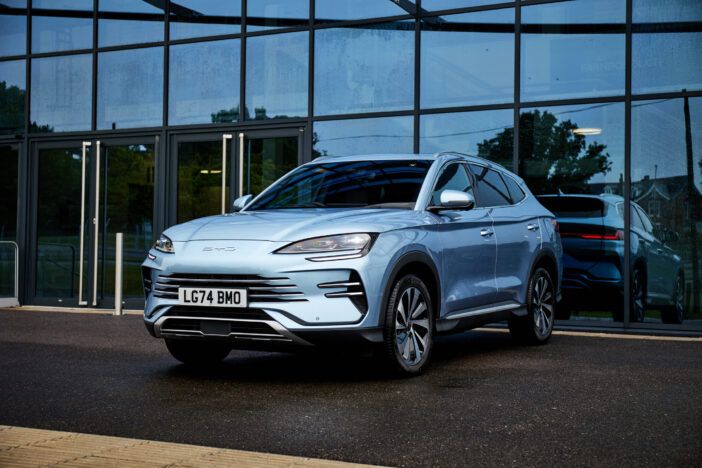BYD registered more pure electric cars than Tesla in Europe for the first time in April, marking a significant shift in the continent’s EV market as Chinese automakers adapt to European Union tariffs through expanded plug-in hybrid offerings.
According to Jato Dynamics data covering 28 European nations, new passenger car registrations remained stable in April with 1,078,521 units registered, representing a modest increase of 1,399 vehicles compared to April 2024. Year-to-date registrations through April totaled 4,467,681 units, up 6,560 from the same period last year.
Tesla reported a 49% year-on-year decline in April volumes, while BYD achieved a 359% increase over the same period. The Chinese automaker’s growth spans both fully electric vehicles and plug-in hybrids, allowing it to outsell established European brands including Fiat, Dacia and Seat in several markets.
“Although the difference between the two brands’ monthly sales totals may be small, the implications are enormous,” said Felipe Munoz, Global Analyst at JATO Dynamics. “This is a watershed moment for Europe’s car market, particularly when you consider that Tesla has led the European BEV market for years, while BYD only officially began operations beyond Norway and the Netherlands in late 2022.”
BEVs and plug-in hybrid EVs combined accounted for 26% of new car registrations in Europe in April, a new record. BEVs represented 17% of registrations, up from 13.4% in April 2024, while plug-in hybrids accounted for 9%, up from 6.9% the previous year.
Chinese automakers have responded to EU tariffs on China-made EVs by diversifying their European lineups with plug-in hybrids, which have not been targeted by the tariffs. Registrations of electric cars made by Chinese manufacturers rose 59% year-on-year in April, reaching almost 15,300 units.
The plug-in hybrid segment showed particularly strong growth from Chinese brands, with volumes increasing 546% year-on-year from 1,493 units in April 2024 to 9,649 units in April 2025. Chinese car brands now account for almost 10% of total PHEVs registered in Europe.
“While the electric vehicle segment was a bright spot for Europe’s new passenger car market last month, these gains were offset by significant declines among ICE vehicles,” Munoz said. “EV sales need to grow much faster to have a genuine impact on the wider European car market.”





